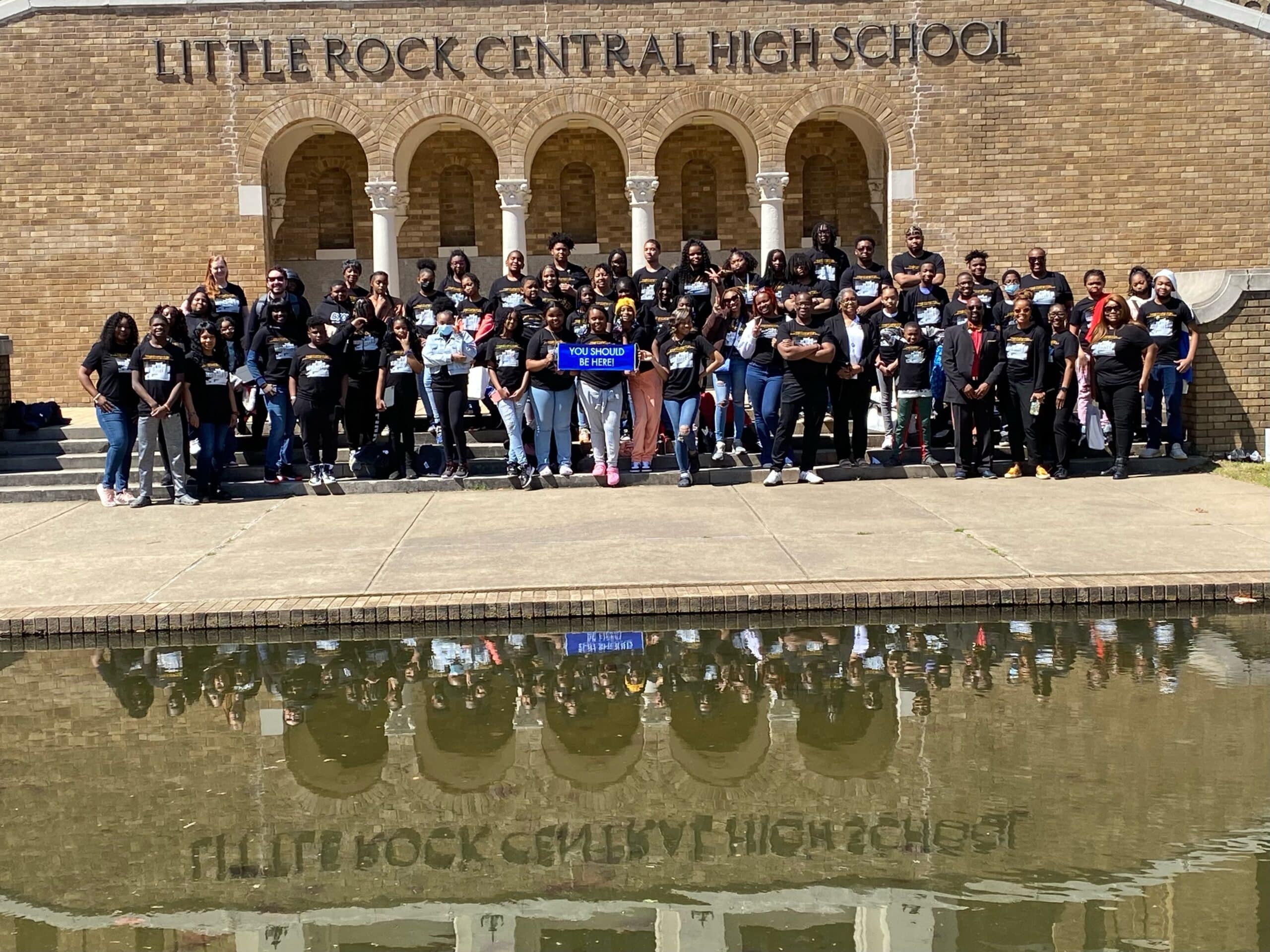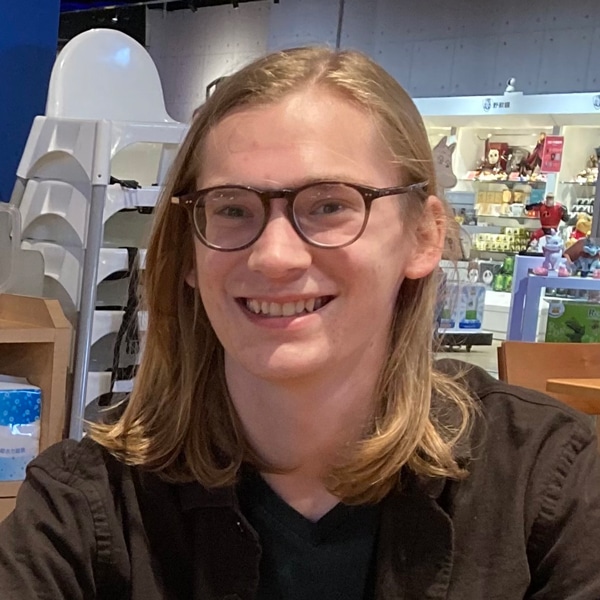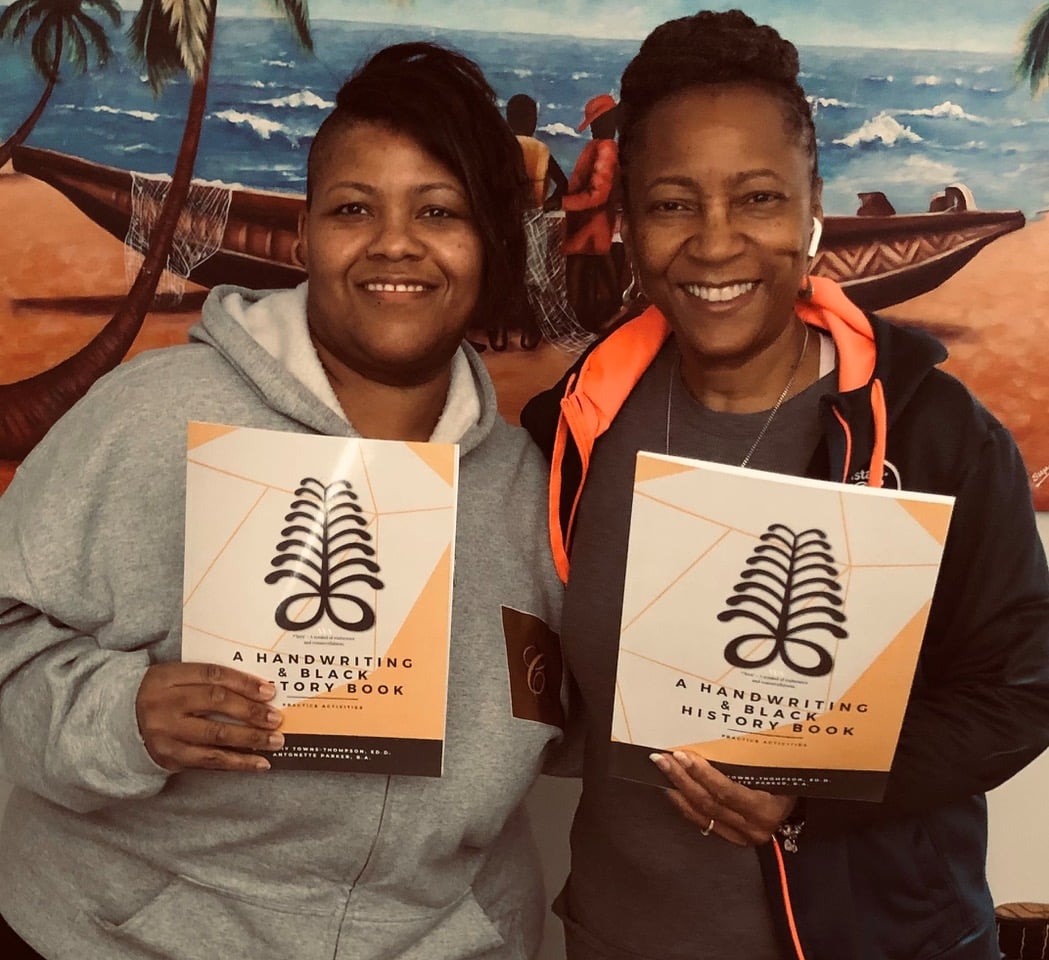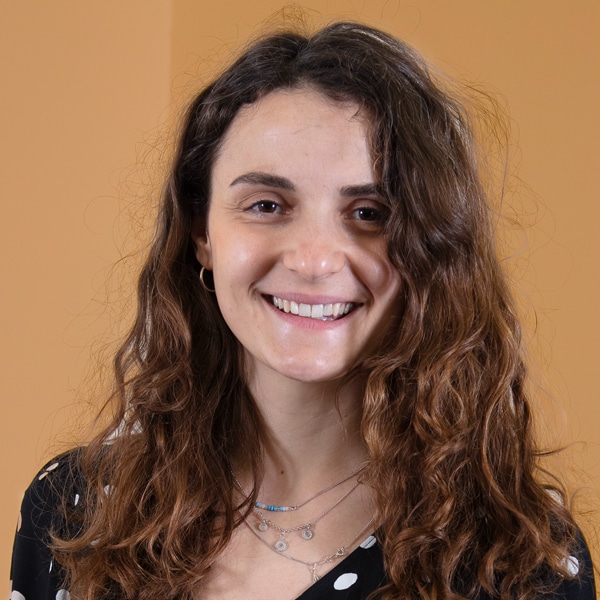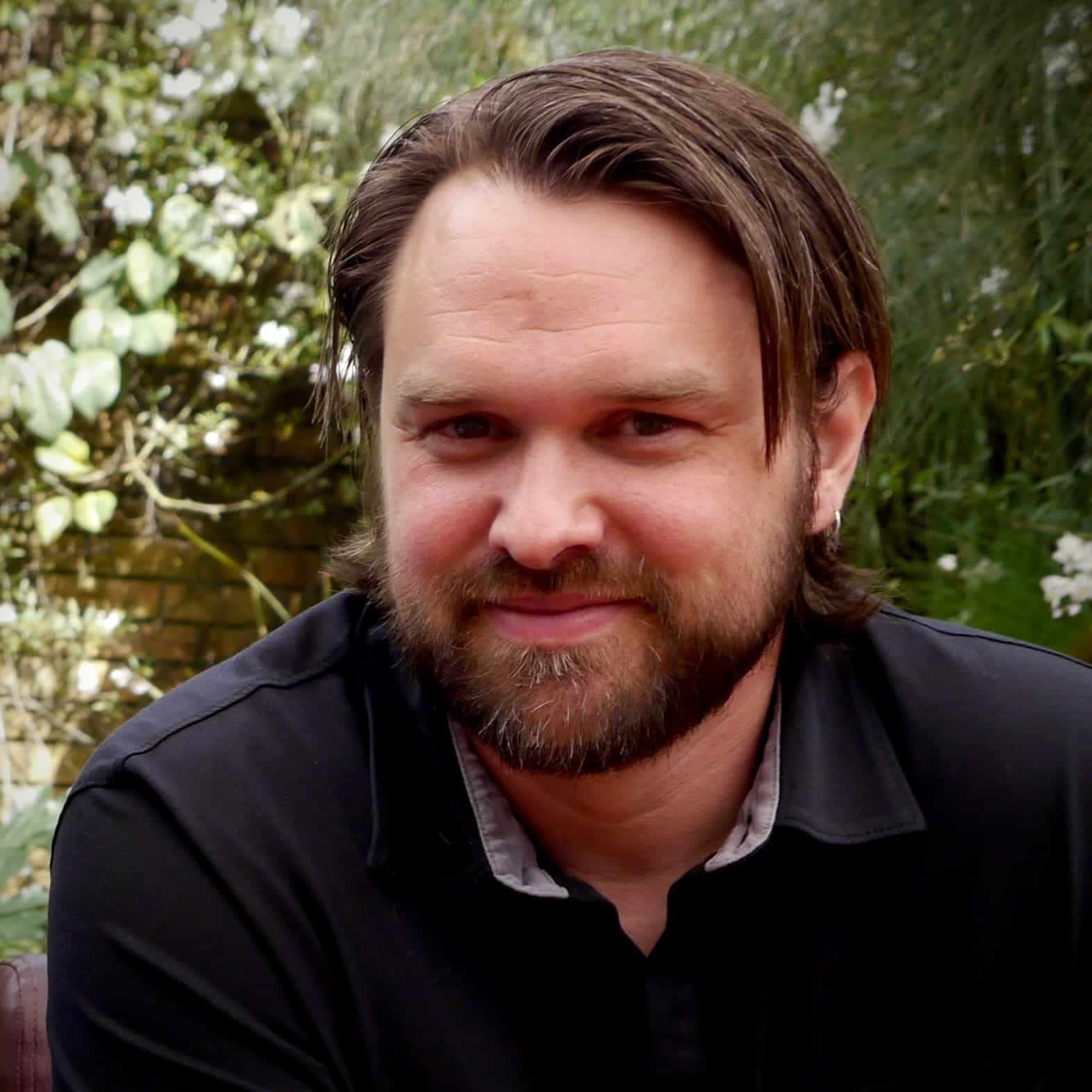Students Visit Little Rock to Explore the Civil Rights Movement
On March 28, the LUV Institute arranged for 60 middle and high school students to travel to Little Rock, Arkansas, to learn about the Little Rock Nine, the group of nine Black students who enrolled at the formerly all-white Central High School in Little Rock, Arkansas, in 1957. The Love, Unity & Values (LUV) Institute has been working with underserved youth since 2012 to inspire hope and empower them with economic opportunities while building resiliency and social-emotional competencies. Cosette Nazon-Wilburn, Executive Director of the LUV Institute and a 2020 Chicago Peace Fellow, formed partnerships between the LUV Institute, local schools, the Illinois State Board of Education (ISBE), and a community of teachers to facilitate the trip.
Students at University of Chicago Charter School and Ariel Community Academy participated as a part of LUV Institute’s bi-weekly Media Empowerment Program. LUV was able to expand the program this year through funding from the ISBE’s Phillip Jackson Freedom Schools Grant. The LUV Institute has held Journey to My Better Self programs for the past eight years, but this is the first year that the program has included an out of state trip. The programs prepare youth and young adults ages 16-24 to be job-ready for economically sustainable employment in high-growth industries and occupations. The Media Empowerment Program focuses on training students in journalism and storytelling.
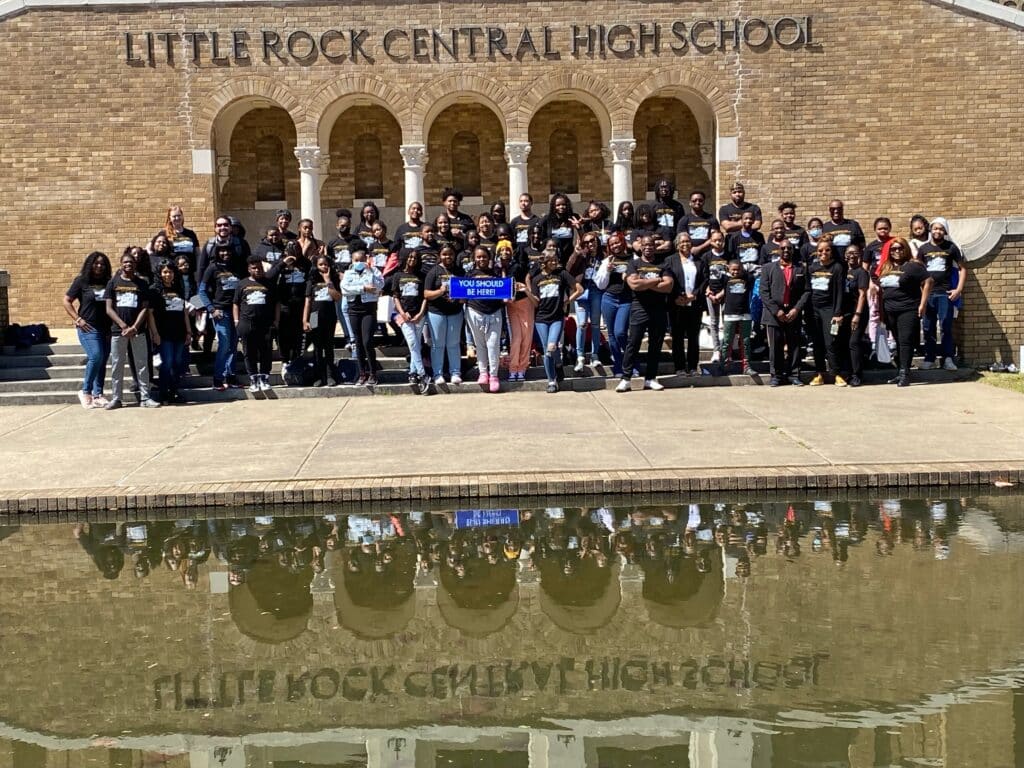
The LUV Institute also hired teachers from University of Chicago Charter School and Ariel Community Academy with funding from theFreedom Schools Grant. The grant is intended to fund a Freedom Schools network, offering a research-based, multicultural curriculum during the summer and/or school year to improve outcomes for low-income students. This funding allowed the LUV Institute to pay particular attention to hiring teachers from neighborhood schools to take part in the program. Each teacher was paid $60 an hour, which is higher than what teachers are usually paid to work for afterschool programs. By hiring neighborhood teachers, the LUV Institute not only contributed to the community of teachers but also invested in the schools they teach in. Teachers, deans, and administrators also learned restorative practices, which provided them with tools to improve their classrooms.
Leading up to the trip to Little Rock, the LUV Institute taught a six-week course on the Civil Rights Movement. The curriculum for the program aimed to teach students how to tell stories under the lens of racial healing and grasp the idea of looking at history as a way forward. The curriculum was provided by nonprofit Facing History and Ourselves, and was designed to create a pathway for young people to explore Little Rock Nine narratives within their own lives. One of the books offered as part of the curriculum is ”Warriors Don’t Cry: A Searing Memoir of the Battle to Integrate Little Rock’s Central High” by Melba Patillo Beals, one of the Little Rock Nine. “Warriors Don’t Cry” emphasizes the role media played in theLittle Rock Nine and the Civil Rights Movement as a whole, making it a strong tie-in to the program. Students were also provided with iPads to document their experiences and participate in the curriculum.
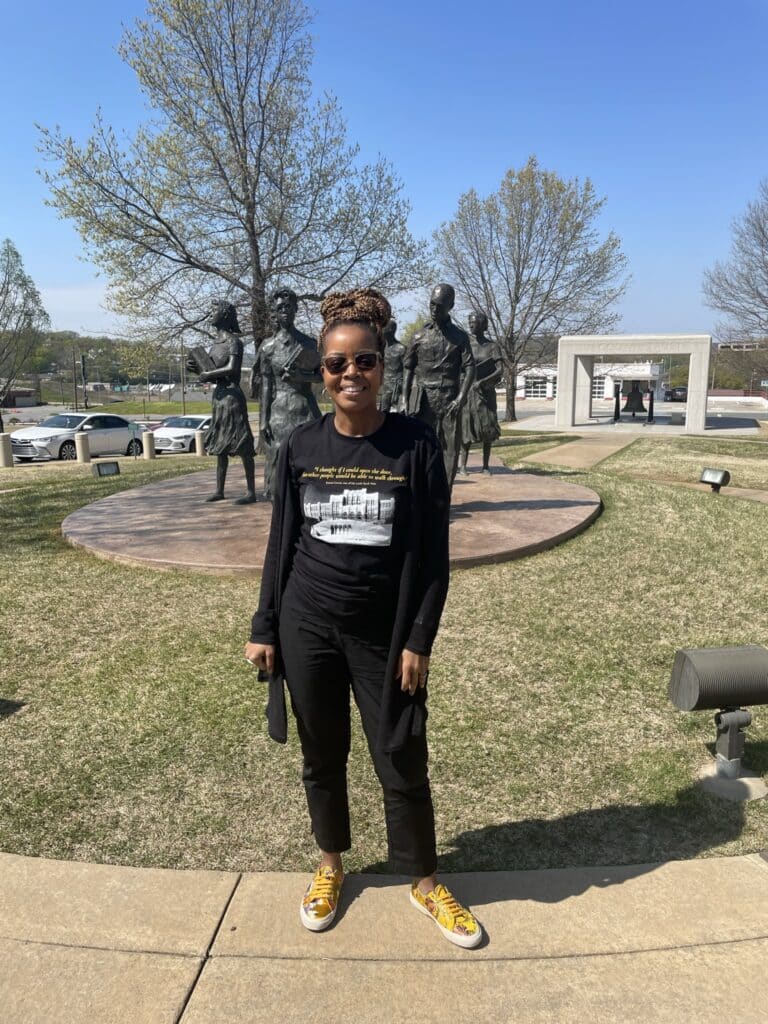
There was an additional layer of opportunity for high school students who took part in the program as they received leadership training and served as mentors for the middle school students. Both high school and middle school students took the course side-by-side to learn history and create their own narratives. All of the high school students who participated attend University of Chicago Charter School in Woodlawn. The next phase of their project is to create a mosaic that will be at the school and serve as a reminder of their experience.
When it came time to visit Little Rock, the students had a full day of activities, visiting Little Rock Central High, the Arkansas Capitol building, as well as various memorials. Central High is now a National Historic Site and students were able to visit a memorial park, the historic Mobil/Magnolia gas station, and the visitor center. On their trip, students watched a documentary about the Little Rock Nine and also got a chance to see memorabilia and purchase souvenirs. The trip included a visit to the Arkansas Capitol Building, which features a statue of every member of the Little Rock Nine, as well as quotes from them.
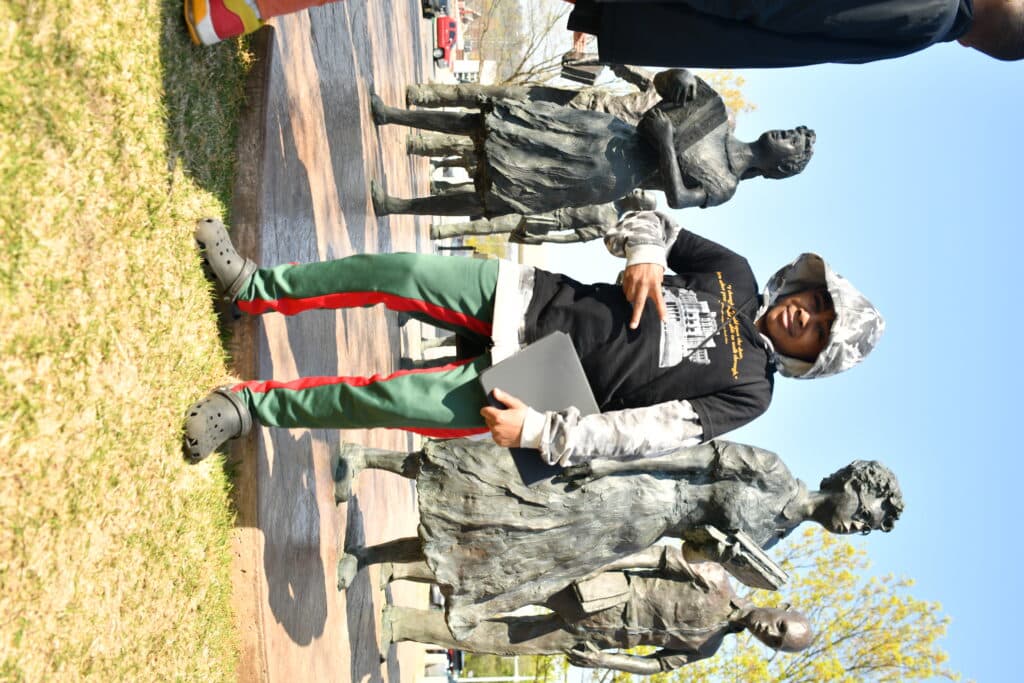
The visit to Central High revealed the resources offered by the school's campus and how the diversity of the school has advanced since the integration of the Little Rock Nine. They met with two assistant principals from Central High who provided updates on the current status of the school. The assistant principals emphasized the diversity of Central High, which now accommodates students internationally who speak over 30 languages. Today, young people all over the world attend Central High, since it is a large school with the resources to support a diverse student body.
As students visited Central High and other historical sites related to the Little Rock Nine, they reflected on their own experiences and the current opportunities they have to address social injustice. Cosette emphasizes that the trip was intended to have the students ask, “What are the Little Rock Nine situations in my life? What have my parents and grandparents had to do? And when have I had to stand up to injustice?”
Visiting Little Rock will hopefully inspire ongoing leadership within the students. By focusing on the Little Rock Nine, who were kids between the ages of 14-16 when they transferred schools, the curriculum focuses on young peoples’ capacity to be change makers.
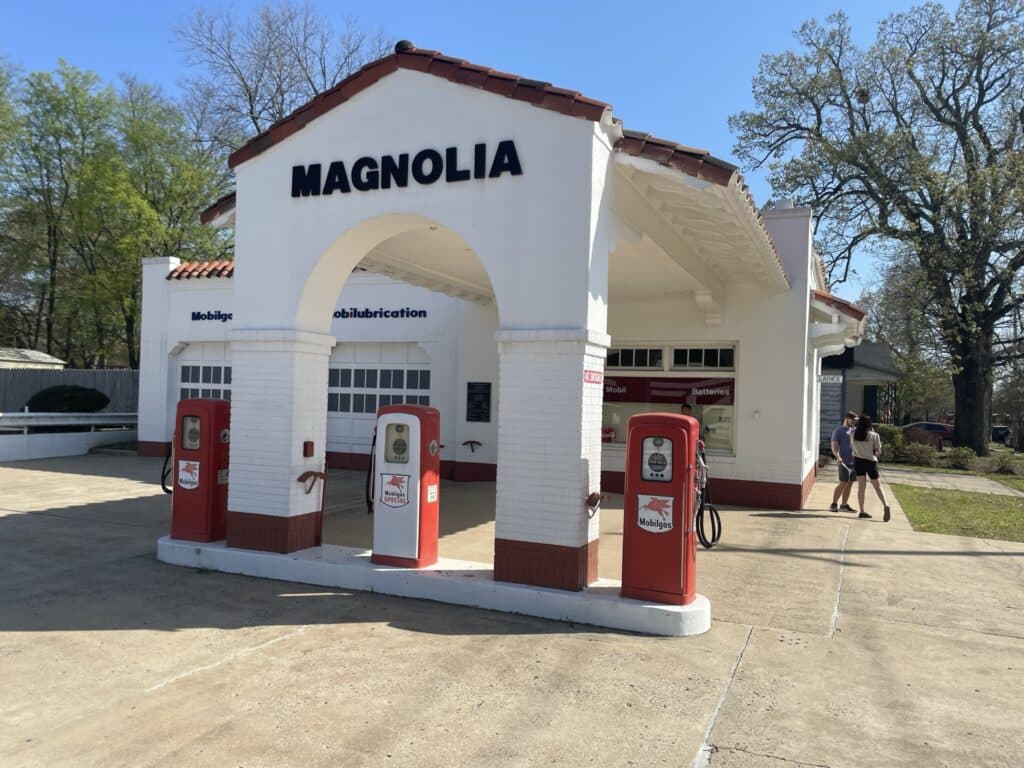
Opportunities for reflection were extended to the families of students. One of the adult chaperone’s is the grandmother of one of the children in the program. She stood on the street in front of Central High and provided testimony of what happened when the Little Rock Nine were escorted into the school by the National Guard. She noted how the neighborhood around Central High used to be an entirely white neighborhood and has now become a Black neighborhood. She also talked about how the Little Rock Nine saw Central High School as an opportunity for educational advancement. Central is a large high school close in size to a college campus, which was a stark contrast to the much smaller all-Black Horace Mann High School that was built during the same period.
Following their visit to Little Rock, the students’ experience of the trip will be used to tell their own stories. They used their iPads to create narratives about their trip. A documentarian accompanied them and will work with the students to combine their narratives and footage to create a documentary. Through connecting with history and actively applying it to their lived experiences, the students will see the importance of telling their own stories and engaging with their community.
A Reflection on Black History through Handwriting: An Interview with Dr. Dorothy Thompson
2021 Chicago Peace Fellow, Dr. Dorothy Towns-Thompson and her daughter, Antonette Parker, a teacher, recently co-authored three books on Black history and handwriting for children of all ages. Dr. Thompson has over three decades of experience as an educator, alcohol, and drug prevention professional, administrator, and ordained minister and has used the skills she acquired community activist and teacher to author these books.
The books cover arts, social studies, and social-emotional learning. They also include a motivational word for each letter of the alphabet, a definition or explanation of the word, and historical locations and personalities. The author also focuses on the importance of inter-generational connections and the need for communication within families and schools.
A unique aspect of these books is their spotlight on cursive writing and handwriting as a way of inscribing and honoring Black history. Dr. Thompson stresses that the books are not only a step further in bridging the educational gap in our society, but also inform future action-oriented strides.
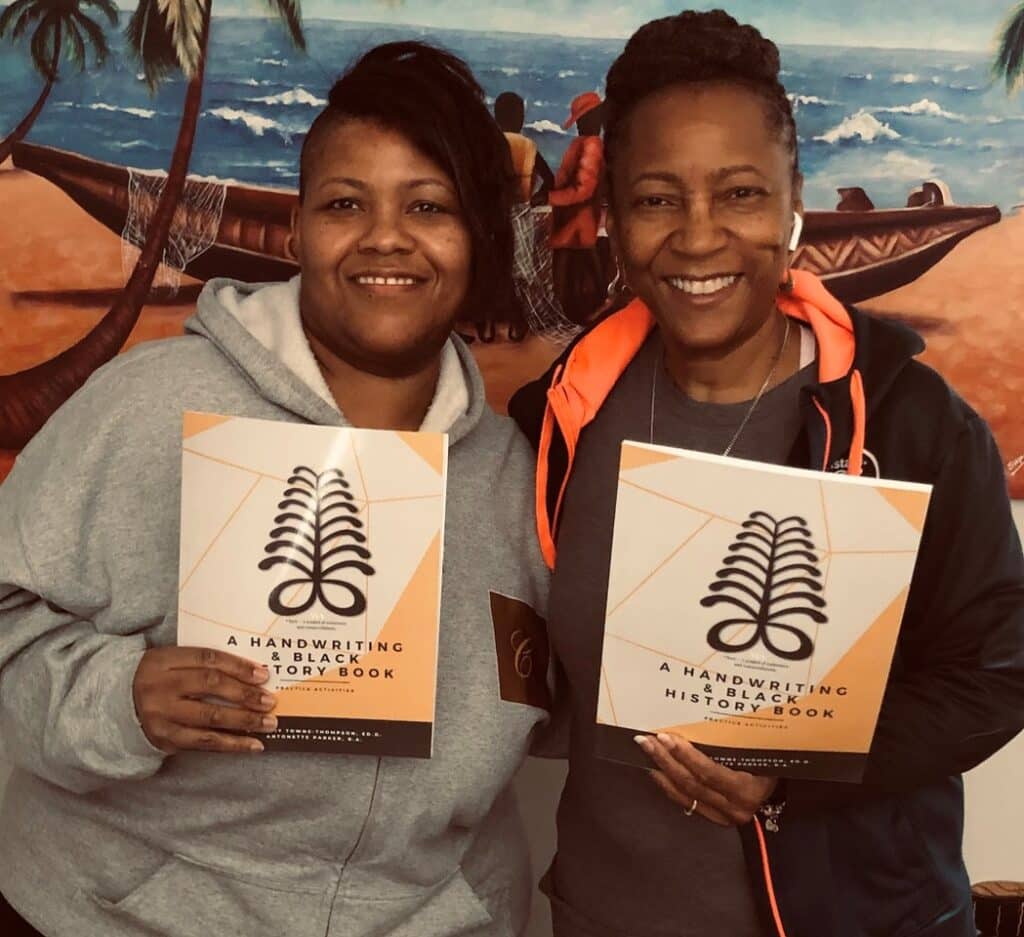
Flipping the Pages
The facts, photos, and biographies encourage youth to do more research on Black history once they read the books. Volumes 1, 2, and 3 of the books, released in February in connection with Black History Month, are for children of all ages, focusing on the experiences of Black people. "One reason I thought to write this is that I did not want just to have a book dealing with history or writing. My daughter and I also added inspirational messages. The book is divided into three volumes: primary, intermediate, and upper,” she elaborates. Each book cover has a distinctive color influenced by the Ghanaian Flag.
"The first Book is for primary students (Grades Pr. K - 2) and has a golden cover. It begins with “A stands for Africa,” with pictures on that page. It continues, “Africa is a continent, and America is a country.” We know that some children often cannot read books in the primary grades. Still, adults can read to them, drawing that emotional connection between the youth and adults." She adds, “The African diaspora spans from sea to sea and connect. And, through the books, people can see the connection. "There is also a sense of unity in this," Dr. Thompson added.
Book two is for intermediate students (Grades 3 - 5), and its color is green. It has the exact format followed by the book one, but the handwriting practice is in cursive. "To me, there's a need to be able to use the pen and paper where students are learning cursive writing because many young people don't know how to write in cursive. They have difficulty reading cursive." She shares that cursive writing is helpful to learn because it not only helps younger people decipher others’ handwriting, but also it is usually helps them to write a little faster.
The third book is burnt orange, representing the red of the Ghanaian flag. Dr. Thompson explains that "This book serves students in upper grades or higher (6 and up), and each letter of the alphabet includes two noteworthy historical figures." She further talks about how they chose specific people from the Black community while considering the goal of increasing connectedness and celebrating accomplishments: "You have famous Black people that people heard about like Dr. Martin Luther King, or Jennifer Hudson and George Foreman. But we also have people who were in art, or who were scientists. We have Eleanor Samuel, a scientist, and physicist. Or, the mathematician, Walter Mosley. " Dr. Thompson explains that they wanted young people to see Black people who are historians, politicians, performers, and athletes too. "It varies. We picked different people who have contributed to the history of Black people." The inter-generational connections are vital to her; she says adding they want to keep it going.
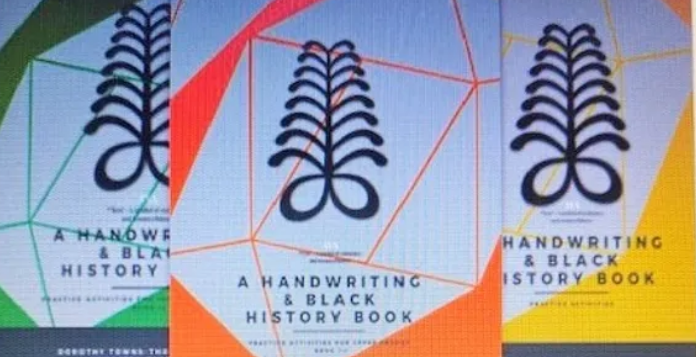
A Better Understanding of Black History
Dr. Thompson and her daughter also reflected on the relationship of their books with Black history overall when writing them. “A lot of times, young people, sometimes even people in general, do not see the connection between the relationship of Africans and African Americans. [...]. Because of the history and slavery, and how we represent people from different parts of the world and continents."
Dr. Thompson designed her books to highlight the need for people to see the rich history and how Africans and people from the African diaspora contributed not only to America but to various places worldwide. "Many times, young people and other people just see the negatives of Black people. That is why I say the book is not just for Black children, our children, or people in general. It's just to show that contributions have been made and continue to be made by Black people." She believes that having opportunities for communication within families or even in schools is so important. "I do not see my book only being used in schools. I see my book also part of family relationships." she adds.
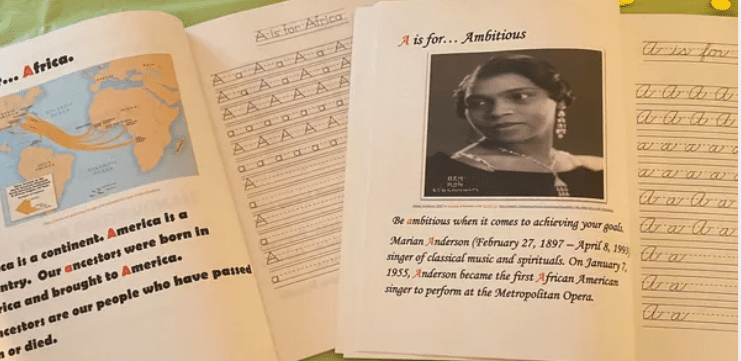
The Meaningful Mother-Daughter Cooperation
Dr. Thompson and her daughter Antonette adopted a division of labor concept as they collaborated on the book. "We selected different portions of what part of the book we wanted to manage. And then we came together to see what worked, what we should include, and how it should be shaped." She emphasized her daughter’s work as a primary school teacher aided in their ability to communicate and collaborate as they both have experience working as educators. Further, she adds that this will not be their last cooperation. "Since we are focusing on anti-bullying, that's one of the things that we are looking at creating a book for. We were ironing out some ideas. It would be another collaborative work."
Check out their website for book signings and more on A Handwriting and Black History Book.
Every One of Us is Better Than Any One of Us
By Yusuph Masanja, Co-Facilitator, Global Alumni Network
We want to teach young people how to be productive, we don’t just give them jobs! We ensure they can keep the jobs and grow to creating their own jobs
Raymond Richard, Goldin Global Fellow
Raymond emerged from struggles of homelessness, criminal activities and substance abuse to become a mentor, activist, and public speaker. He works tirelessly to decrease neighborhood violence and contribute to a safe environment for children and families across the United States. Driven by the urge to help young men and women become productive members of society, Raymond founded Brothers Standing Together (BST) in 2009, a year later after being released from his sixth incarceration.

BST has empowered over 1,500 youth through different programs, including but not limited to, practical skills training such as carpentry, plumbing, welding, painting, bricklaying etc. Raymond provides lifelong traits that help youth find a purpose in life. BST programs also assist youth with obtaining Identity cards, birth certificates, license, housing, meals and employment.
“65% of young men in the city of Chicago don’t have IDs, every time they are stopped by police, they are labeled as John Does.” Raymond says.
BST is partnering with County jails to provide opportunity for community service work. At BST, Exemplary volunteers often get enlisted for available job opportunities. During the pandemic, it has become challenging for BST to reach youth, especially the homeless.
COVID has decimated our community outreach, I am often outside seeking job opportunities for our youth or speaking with youth because most of them are outside–you have to be grassroot to serve them better. It’s now difficult to reach out to those who are mostly likely to shoot or be shot, we try to keep communication open with caregivers and parents through emails.
With 15 staff, BST tries everything to reach more youth, but more help is needed. Ray shared, “With all the good help we provide, we don’t even have the help that we need, and that’s our struggle. That’s why I created the Brothers Standing Together LLC program in order to help the nonprofit.”
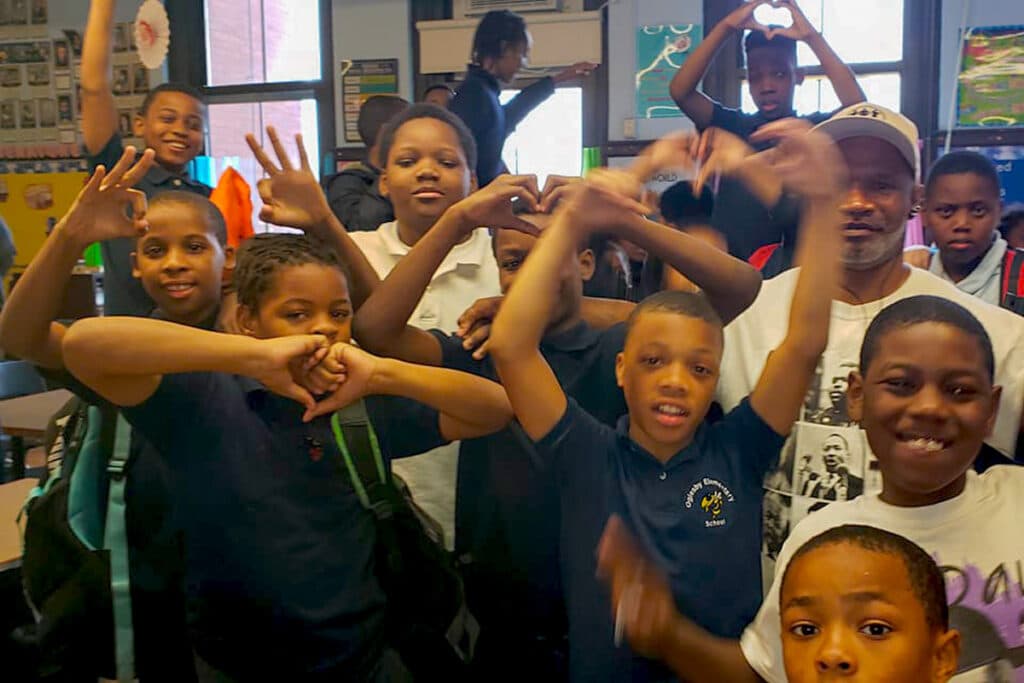
Raymond has been a strong advocate against the shootings of Tamir Rice, Mike Brown and Eric Garner. His advocacy work has been featured broadly on CNN and MSNBC media. Among other advocacy, he continues to lobby for a change of legislation affecting returning citizens, the term he advocates to be adapted for formerly incarcerated individuals, because the majority of them are now productive members of society like himself. To reiterate the puzzling question his mentor uses in advocacy, Raymond asks “Where do my wrong ends and my rights begin?"
Raymond calls on all Goldin Global Fellows to stay connected and united, because the struggle against violence is not only in America but worldwide. He would be happy to hear from any fellow interested in collaboration or needing any assistance that he can provide. He says “every one of us is better than any one of us” Brothers Stand Together needs us to keep them uplifted as they keep us uplifted.
How to survive the tough path of life
[paragraph extra=""]Vestibulum quam nisi, pretium a nibh sit amet, consectetur hendrerit mi. Aenean imperdiet lacus sit amet elit porta, et malesuada erat bibendum. Read more
Gather Update: Building a Platform for Grassroots Leadership

The Goldin Institute is making great progress in building GATHER, the tablet-based distance learning course to promote grassroots leadership for community driven social change.
As the Director of App Development and User Experience, I have been building the interactive capacity of the Gather platform which now includes real time chat built into the educational platform. We have been focused on “designing for the margins” making the content and navigation as user-friendly as possible so we reach the people the course aspires to support.
My colleagues on the curriculum development side have welcomed a new instructional design expert to the team, Kelly Salek of Lessons Learned Consulting. As Kelly noted:
"I have been involved in creating leadership and diversity trainings for a wide range of big companies. Through working on Gather I've learned new ways to think about how and why we need to deeply and authentically engage our communities if we want to make lasting change."
The curriculum "map" developed by the Gather Team offers a concise overview of the range of values, tools and frameworks of the course. Together, these insights and strategies will help Gather Fellows to broaden the base of neighbors and partners active in community driven social change efforts, especially by prioritizing the voices of people most impacted or traditionally excluded from participation.
The Gather curriculum will offer a wide range of materials, perspectives and voices to guide group learning and reflection complemented by the opportunity to learn by doing through involving the local community as learning partners. Content will include, but not be limited to, the use of readings, interactive assignments, video and audio stories and commentary, illustrations, synchronous web chats, a “virtual café’’ and robust discussion boards. We will look for a media mix that encourages the course participants to establish relationships with one another as they move through the coursework.
One example of an audio-visual resource that will be included in the Gather Library is "The Danger of a Single Story" by the novelist Chimamanda Adichie:
We are excited to host our inaugural class of Gather Fellows later this year. If you or someone you know wants a chance to develop and share grassroots leadership skills, click here to sign up for updates and a chance to apply.
Spring 2014 Newsletter
Spring is making its way slowly toward the Goldin Institute's headquarters in Chicago. While seasonal change is in the air locally, systemic social change is underway at our global offices abroad. In this issue of the e-newsletter, we document the important work of our Global Associates. We are pleased to share these success stories from the field highlighting the positive, long-term changes underway, particularly in the Philippines and Colombia.
We invite you to take a look back at the first quarter of 2014 by viewing this short video overview of the newsletter.
Philippines
The Goldin Institute's efforts to provide access to clean water in the Philippines have continued to develop through the hard work of our Global Associate Dr. Susana Anayatin and her team. As part of her ongoing efforts, the team completed the installation of a 20 cubic meter water depository at J Marquez Elementary School located in the armed conflict area near Cotabato City on February 5, 2014. While conservative in size, its impact on the 1,875 students, 50 teachers and immediate community of about 1,000 families is immeasurable.


Colombia
In Colombia, where ongoing civil conflict is a part of life, the Goldin Institute’s Global Associate, Lissette Mateus Roa and her team are working to create a peaceful coexistence between community members by leveraging Colombia's vast education system. Governmental changes every four years brings with it new educational priorities that public schools often struggle to adopt. Teachers and administrators drop current initiatives and quickly shift focus, resulting in a disjointed educational curriculum. These professional issues are often further complicated by the stress of working in a conflict zone. Struggling to deal with the personal and professional challenges, teachers and administrators often have conflict-laced interactions with each other and students. Observing the weak educational opportunities provided to students and the stark need for child soldier reintegration, Lissette developed a pilot project to help use curriculum and counseling to turn schools into centers for reintegration. The Pedagogy of Care and Reconciliation (PCR) project is currently running in three schools in Colombia in addition to ones in Mexico, Peru and the Dominican Republic.
The project utilizes the ESPERE methodology which focuses on forgiveness and reconciliation. Teachers participate in a 6-day workshop where 3 days are dedicated to forgiveness and 3 days are dedicated to reconciliation. Following the workshop, teachers engage in dialogue sessions for 6 months; discussing topics such as school rules, priorities in student education, current problems and alternative student punishments. The dialogue portion in particular provides a rare opportunity for teachers to voice their concerns and be heard. As changes are made at the top, the positive effects of peaceful coexistence and alternative solutions are visible at the bottom as evidenced in a recent encounter in the Dominican Republic. An older student in the Dominican Republic was bounced around to several schools; known as a troublemaker, his reputation preceded him, resulting in teachers unwilling to welcome him into their classroom. After getting to a school utilizing the ESPERE methodology, a teacher asked him to repay his past misdeeds by teaching primary school students. Teaching younger students as an alternative to going to the principal’s office brought out his compassion and self-control, which had not surfaced before.
Looking Forward
As the ESPERE methodology proves successful in the field sites, Lissette is preparing to extend the school-based training to our partners in Uganda this May, 2014. The team in Gulu is excited to adapt this model to work with former child soldiers and the community as they grapple with forgiveness and reconciliation.
Keep an eye out for more information about this project in the next newsletter.
Also watch the next e-newsletter for the latest news from the Grassroots Leadership Development project. The team is hard at work with our colleague Bliss Browne of Imagine Chicago to develop a course that will inform and inspire grassroots activists in leading community-driven initiatives worldwide.
If you have suggestions of individuals who may want to receive this e-newsletter or stories you think we should tell, please contact us at news@goldininstitute.org.
